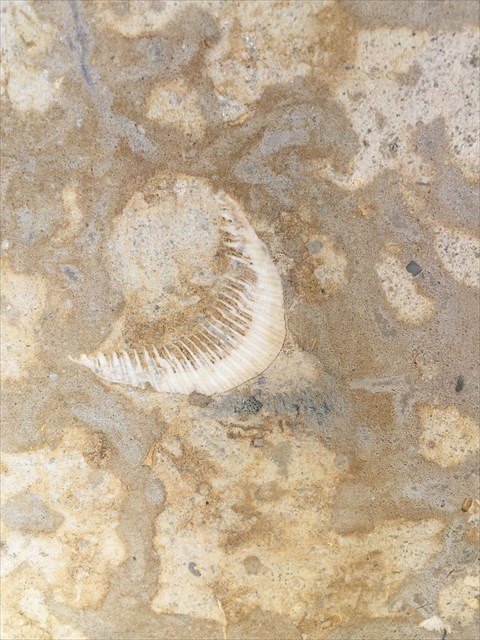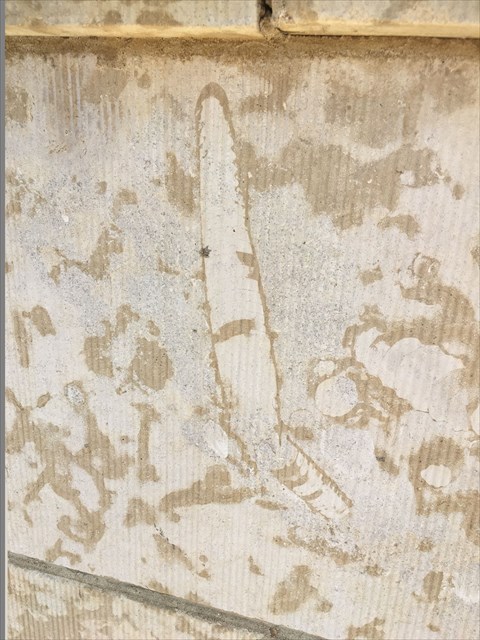You probably have seen this tapestry often without really knowing. The tapestry in question is on stones extracted from a quarry in Manitoba. These are called Tyndall Stones and were often used to construct prestigious buildings because of their high quality, color, beauty and hardness.
Tyndall Stone is used as an ornamental building stone in many cities in Canada and the United States. It is a light brown, fossil bearing limestone that has darker coloured branching streaks called trace fossils. While there are many limestones used as building stone in North America, Tyndall Stone is unique.
The colour, beauty and strength of Tyndall Stone has allowed for its use in a variety of ways and architectural styles. Impressive buildings containing Tyndall Stone include the Parliament Buildings in Ottawa, the Canadian Museum of Civilization in Gatineau, the Provincial Legislature in Manitoba, the Rimrock Hotel in Banff, and the Empress Hotel in Victoria.
Tyndall Stone is quarried at Garson, Manitoba, about 40 km northeast of Winnipeg. It was first discovered in the area around 1894, when a farmer came upon the mottled limestone while digging a well. The first large quarry was opened by William Garson in 1898. Gillis Quarries Limited began quarrying there in 1915, and the fourth generation of this family-owned business is still at it today.

How Did Tyndall Stone Form?
Four hundred and fifty million years ago, what is now southern Manitoba was part of a warm, shallow, inland sea. During this time, which geologists call the Ordovician Period, this area was just south of the equator. Many different types of animals lived in this ocean. Some, such as corals, sponges, molluscs, and algae, we would recognize today. Others, such as trilobites and stromatoporoids, are extinct. All of these creatures lived on or above the soft, muddy sea floor. After they died, their remains became part of it. The calcium carbonate in their skeletons made the mud limey, so that when it hardened into rock it became limestone. Fossils of these animals and plants are visible today in Tyndall Stone.
Other animals burrowed in the mud of the sea floor for food or protection. And it is the preserved burrows of these creatures that make the beautiful mottling which gives Tyndall Stone its unique appearance. Nobody knows what exactly these animals were, because the traces of their burrows are all that they left behind. But shrimp in the Caribbean Sea make similar burrows today, so it's possible these creatures were shrimp-like.

Why are the burrows a different colour from the rest of the rock? Well, it all comes down to a difference in grain size and chemistry. As the animals burrowed through the soft, limey mud, they left traces of their passage that caused the mud in the tunnels to be slightly different from the surrounding sediment. The more tightly packed surrounding mud hardened before the less dense deposits in the burrows. Later, magnesium-rich waters percolated through the rock and deposited dolomite in the burrows, but couldn't penetrate the tightly cemented limestone rock. The darker colour of the burrows may be a result of oxidation of trace amounts of iron in the dolomite, or of pyrite that was deposited along with the dolomite.
The information listed above is from a publication by the PDAC. Paterson, D., 2006. Fossils of the Tyndall Stone (Ordovician Age), a common ornamental building stone in Canada. [http://dfp.mediacooks.com/fossils]
 The Requuirments to Log This Earthcache.
Submit the answers to me through my geocaching.com profile, and NOT in your log. Any logs without an accompanying e-mail with answers will be deleted without warnin. If you feel,you have the answers correct please go ahead and log it, I will contact you if there is a problemg.
The Requuirments to Log This Earthcache.
Submit the answers to me through my geocaching.com profile, and NOT in your log. Any logs without an accompanying e-mail with answers will be deleted without warnin. If you feel,you have the answers correct please go ahead and log it, I will contact you if there is a problemg.
1) You must match the fossil name, with the correct photo Cephalopod, Grewingkia, Hormotoma, Fisherites, Try your best to identify the fossil, and make sure that you include the measurements for each one.

photo A

photo B

photo C

photo D
2) Why are the burrows a different colour from the rest of the rock?
3) The Tyndall Stone is quarried where?
4) The Tyndall Stone was first discovered in 18?
5) On which wall is the fossil Hormotoma to be found North,South,East, or West side
6) Optional: post a picture of yourself and/or your GPS.